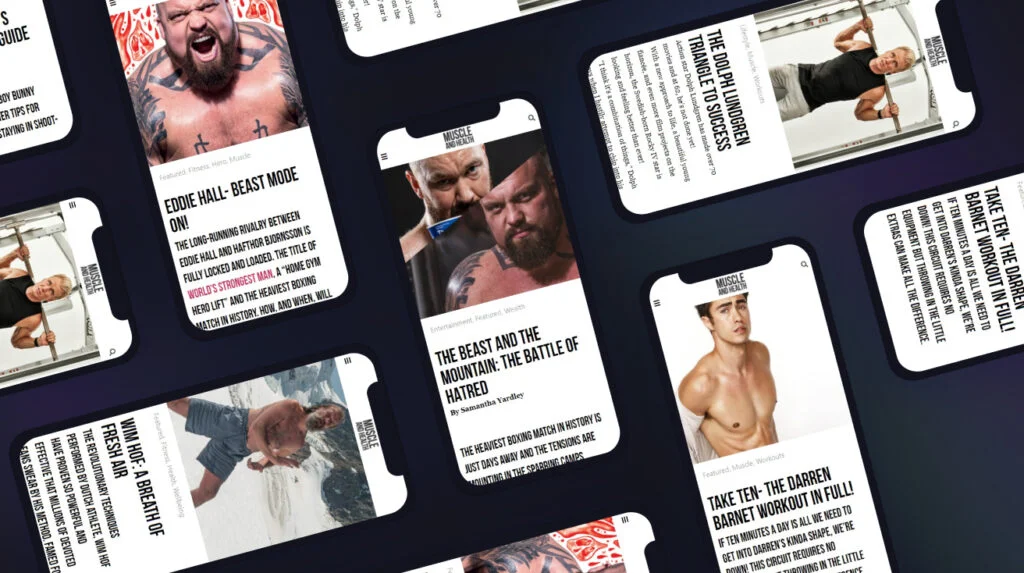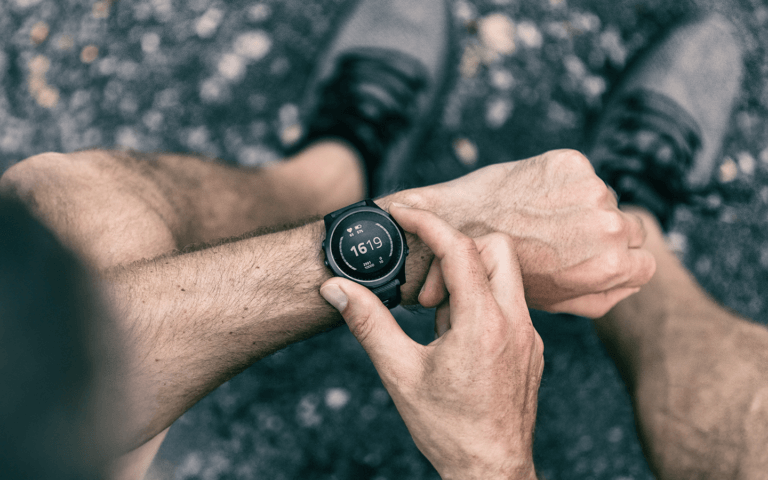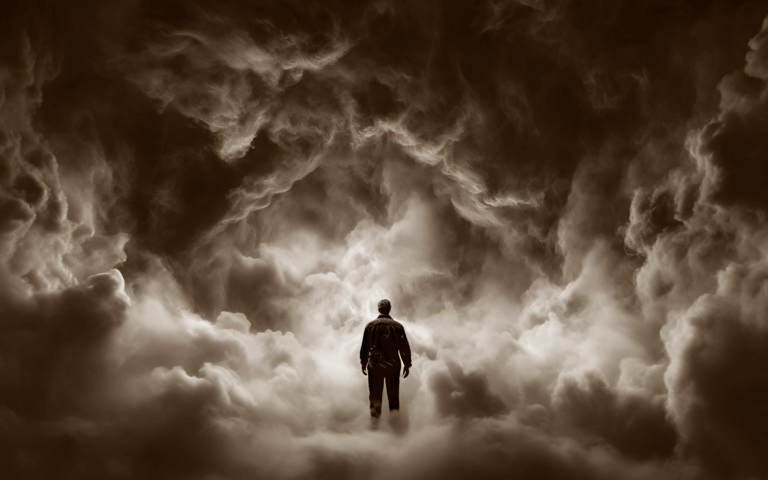Simply type in ‘mukbang’ into any of your social media platforms.
Go on.
Are you hungry yet?
2.7 billion people are on TikTok, and millions more will likely indulge within the hour. Currently, there are 3,945,886 posts of people stuffing their faces for your viewing pleasure.
All mukbang-related dreams and fantasies can be found on YouTube, with 278,000 channels dedicated to the ASMR food craze and 2.7 million individual videos.
It’s a term that combines the Korean words for “eating” and “broadcast.” True to its name, mukbang involves watching a single host eat copious amounts of food.
Think of an entire buffet of fried foods, a dozen full-size lobsters, or a grocery cart’s worth of ramen. Ten thousand calorie meals, 50 pieces of KFC in one sitting, every item on the McDonald’s menu.
This form of ‘eatertainments’ ethical and moral implications are questionable despite creators citing that they could help people overcome a fear of eating, with health experts believing they could damage viewers’ mindset toward food.
The world of mukbang and the characters at the center of its calorie-dense story are curiously fascinating and as wealthy as the ludicrous portions, with the big hitters of the trend collecting millions with every passing month.
From presenting unrealistic portions to promoting food waste, eating disorder specialists see major red flags in this form of content.
We hope you’ve got an appetite.
Spreading like butter
Mukbang originated in Korea in around 2008 and is a phonetic translation of the Korean words 먹방 (먹다 means eat and 방송 means broadcast) – it literally means broadcast eating.
Mukbang videos, described as “gastronomic voyeurism”, soon became an international trend.
Though the mukbang genre may be trending in the U.S., but it’s been around in South Korea since at least the early 2010s.
Its exact origins are unclear, but some have speculated that it sprang from a desire to depart from the communal eating traditions of Southeast Asia.
These days, millions around the globe participate vicariously in solo feasting via Youtube, Tiktok, and Instagram. Streamers themselves are also now not only from Asia—folks from various food cultures, including Germany, Brazil, and the American South, have gotten in on the online action.
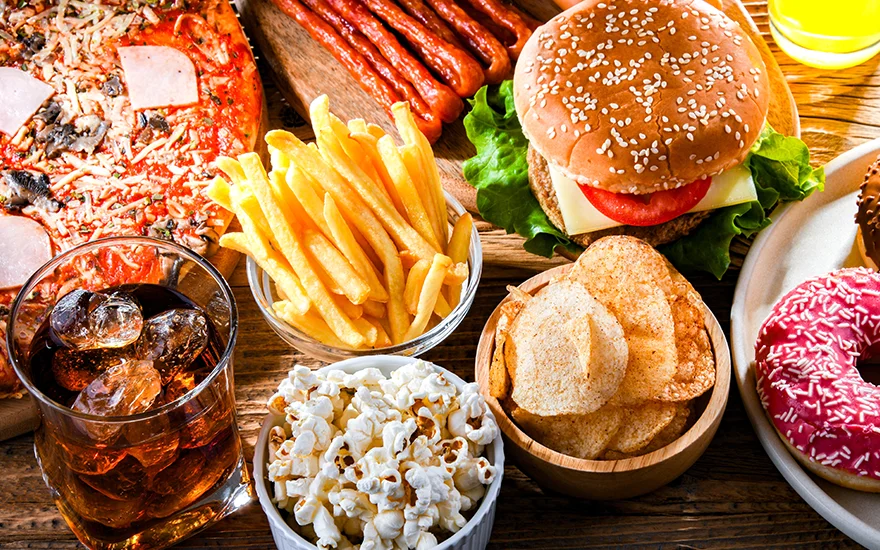
The content of mukbang videos can vary. Typically, a video is themed around a certain type of food, such as sushi, pasta, or items from a specific fast food restaurant.
Some streamers may use unusual or extravagant cooking preparations, like creating a batter of crushed Hot Cheetos for frying corn dogs or melting cheese with a blowtorch.
Others incorporate elements of ASMR (autonomous sensory meridian response), amplifying the sights and sounds of every bite.
One thing remains consistent, however: the videos feature a single host consuming (and usually enjoying with great gusto) a pile of food that few people could reasonably eat in one sitting. The foods featured tend to be high-fat, high-sugar, or ultra-processed.
In essence, mukbang is food’s answer to pornography. The more extreme, the more views. The more over-indulgence, the more views. The more calories, the more views.
Smoke and mirrors
“Mukbang videos provide viewers with audiovisual clips of people consuming typically binge-like quantities of food,” says Shelby Becker, RD, who specializes in treating patients with eating disorders.
“The normalization of these behaviors can impact people with eating disorders or disordered eating, as it can be viewed as an acceptable form of consumption.”
Becker also pointed out that when mukbang hosts have smaller, more “desirable” body types, it can add to confusion and shame for people who may have gained weight due to binge eating.
Indeed, many mukbang celebrities are physically slim. Their videos, while not always explicitly claiming to be therapeutic, often send the unspoken message one can find release by overeating, all while staying on the thin side.
Many parts of Asia have punishingly difficult beauty standards that elevate slimness as a physical ideal worth pursuing at any cost. For people starving themselves in pursuit of this goal, there may be something cathartic in watching another person eat freely and with gusto.
Mukbang videos are also guilty of only showing one part of the process, opting to eliminate the potential side effects post-binge.
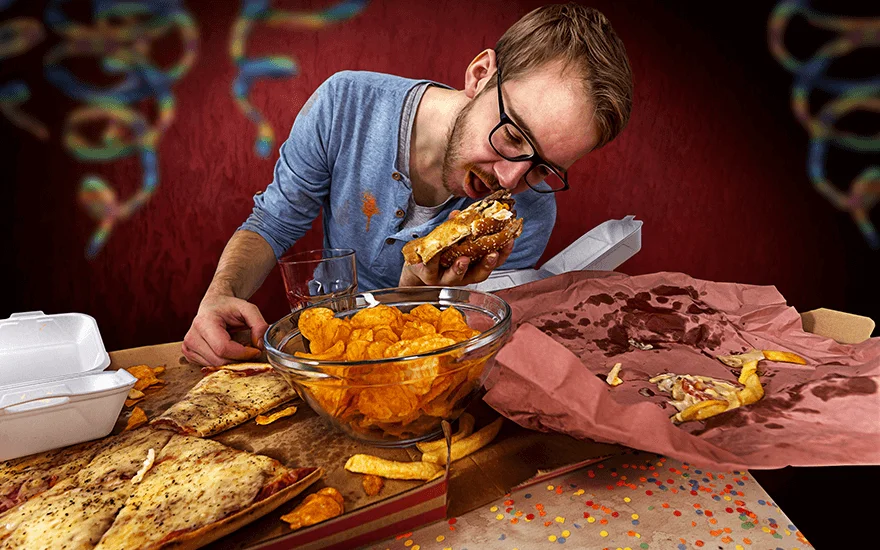
In fairness, who would want to sit and watch someone experience the unpleasant realities of overloading your system with absurd amounts of food?
“These videos encourage overconsumption in an almost romanticized manner by not addressing potential consequences such as upset stomach, nausea, increased emotional eating, etc.,” says Becker.
Mukbang’s glamorization of food is problematic for the eating disorder-affected community, potentially encouraging sufferers to live vicariously through the subject eating large quantities of food while simultaneously neglecting their own nourishment.
For example, videos may motivate restrictive eating to watch someone eat so much or trigger a relapse into overeating, following the example of the host of the Mukbang video.
It’s universally accepted that the negative consequences of feasting on too many hours of mukbang content heavily outweigh the benefits.
Tuning into the Tiktok videos doesn’t encourage tuning into your physical cues of hunger and fullness. According to Caroline Thomason, RD, CDCES, a northern Virginia-based dietitian, engaging with this content too often could disrupt your idea of realistic food portions or what qualifies as a binge eating episode.
Becker agreed that frequent viewing could be a slippery slope toward disordered eating. “Many people do not know that binge eating is an eating disorder and that the behaviors in some of these videos closely mimic that, so people may unknowingly begin to overconsume regularly,” she said.
Additionally, given the vast quantities of food depicted, it’s nearly guaranteed that most mukbangers are spitting out food between takes—which isn’t an eating behavior to model.
The obvious lack of transparency provided by mukbang creators just adds further fuel to the fire, perpetuating a misinformed view of how much food someone can realistically eat in one sitting.
All-you-can-eat epidemic
Mukbangs exploded in popularity around 2015 in the US, which is in the grips of an obesity crisis that has only worsened in the past few decades. In fact, worldwide obesity has tripled since 1975.
Nearly 43 percent of American adults are obese, and per federal 2021 data, more than seven in 10 U.S. adults aged 20 and older are either overweight or obese.
Dr Zak Uddin, a general medicine practitioner from the UK, believes “we are not at the door of an obesity epidemic; we’re well in the epidemic.”
Uddin cites mukbang as a large-scale problem, highlighting the correlation between the trend and growing obesity issues.

“For us to be glamorizing vast calorific consumption or even binge eating is crazy, isn’t it?
You’re normalizing the abnormal.
“As a society, we enjoy the abnormal or the obscene. This isn’t a new thing. If it’s a freak show, people will gravitate towards it.”
A 2020 study confirmed what we all likely knew, revealing videos that showed overeating were watched significantly more often than videos without overeating.
Content that showed the consumption of a large quantity of food within a time limit was watched more often than videos without a time limit.
Who wants to watch someone eat 50 apples when they can watch someone chow down 50 hot wings?
One such mukbang ‘star’ who has taken the trend to its extremities is Nicholas Perry, known as Nikocado Avocado to his over 3.5 million YouTube subscribers across various channels.
The 29-year-old has made a name for himself in the extreme-eating vlogger community since emerging in 2016, with his videos of him consuming entire fast-food menus with his pet parrot gathering the attention of a large audience on YouTube.
Perry became one of the first American men to partake in the extreme-eating trend, as mukbang videos at the time were dominated by women.
What began as an innocent enough approach to the trend has escalated into major weight gain and mental health episodes, which he happily plays out in front of his subscriber count of over 5 million.
He often eats in excess of 10,000 calories in front of the camera in videos such as ‘I hate myself, Goodbye YouTube & life’ and ‘Celebrating Our 700 Pound Milestone.’
In the space of five years, Perry went from being a skinny vegan activist to eating daily mukbangs, becoming bed-bound, weighing 370 lbs on a sleep apnea machine, and gaining so much weight so quickly that he broke his own ribs.
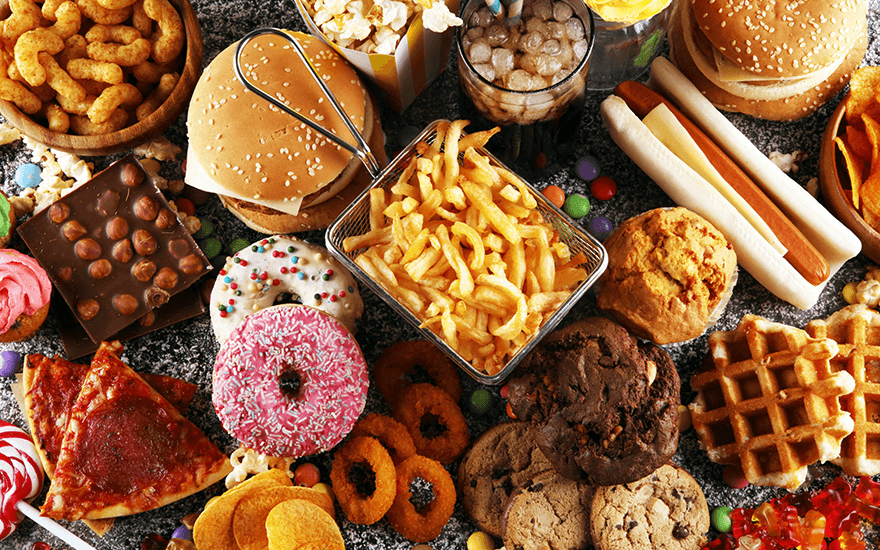
You would assume this is where his mukbang journey ends, but, following his rib-injury diagnosis caused by months of excessive and forceful coughing, Perry posted six mukbang videos of him eating in bed over the following week, each with the same title: “My New Diet As a Disabled Person.”
In one disturbing video, he proudly declares the copious amounts of grease from his monster order will go into his arteries, singing about his new bed-bound status and citing he knows more about nutrition than his viewers.
On September 29, YouTuber Charles White Jr, who has 10.5 million subscribers, posted a video titled, “This YouTuber is slowly killing himself for views,” where he said Perry is “well aware that he is throwing away his health, his well being, his happiness for the sake of some YouTube views because his audience continues to eat it up.”
On January 22 of this year, conservative political commentator and activist Candace Owens discussed Perry’s content in an episode of her podcast, in a clip that was titled, “Gluttonous YouTuber Is Literally Dying for Clicks.”
“He’s doing this because he’s getting attention, getting clicks, but he’s also becoming depressed in front of the world. He’s essentially killing himself on camera slowly,” she said.
Immersed in his own narcissistic bubble, and despite previous comments about health concerns that Perry made in April, the YouTuber now said he is “perfectly healthy,” adding, “I’m not gluttonous. I barely eat that much.”
As of April 29th, 2023, Perry weighs 352.8 pounds, despite recent attempts to shift some of the self-inflicted weight.
Nikocado Avocado has worried users and medical professionals who know full well what could happen to him if he does not drastically improve his health.
TikTok star Waffler69, real name Taylor LeJeune, who gained internet fame for eating bizarre and sometimes expired foods, recently died of a suspected heart attack.
LeJeune boasted 1.7 million followers on the platform, where he posted quirky videos of himself trying watermelon-flavored toast and promotional Addams Family cereal from the 90s, among other suspect food choices.
Feeding the lonely
A sweeping 2020 analysis of different reports detailing why people are attracted to mukbang videos concluded that many feel emotionally connected as they watch people eat and talk to the camera.
For some people who commented on Mukbang videos, the videos had a positive impact and helped prevent binge eating and also reduced feelings of loneliness.
Eating together is often a communal experience. If someone feels lonely because they have to eat alone, watching a Mukbang video may give them a sense of community at the table that they would miss otherwise.
The literature behind why individuals watch mukbangs is not plentiful, but according to an article from the International Journal of Mental Health and Addiction, authors Kagan Kircaburun et al. agree that it can fulfill psychological needs such as loneliness as well as vicarious eating pleasure.
The types of mukbang videos differ geographically, according to Dr. Andrew Harris, a psychologist at Nottingham Trent University, who said content creators in Korea are more interested in highlighting the foods in front of them rather than their personal lives.
“Western versions appear to shift the focus onto the content creators themselves.
“The West appears to have brought a contest or ‘food challenge’ element to the concept, not too dissimilar to those seen in popular TV shows such as Man Versus Food.”
Watching a mukbang video can feel like catching up with an old friend, even if that old friend lives across the country and is eating a mountain of KFC compared to your turkey sandwich.
Some of the videos are designed to feel like a gathering with friends. Nikocado Avocado often appears alongside fellow mukbanger Hungry Fat Chick, or Candy Godiva, who has become a fixture in the mukbang video scene with more than 261,000 YouTube subscribers. Her net worth hovers around $1 million.
A 2017 report on the subject said: ‘One possible motivation of mukbang viewers was that they were forming a kind of viewing community via interacting and communicating with each other on a common interest, which promoted elevated feelings of pleasure and belonging.’
However, it goes without saying that watching mukbang isn’t a recommended coping strategy for disordered eating or feelings of isolation.
“While this may create some feel-good emotions to begin with, bigger change is needed to recover from binge eating truly,” Thomason concluded. “Working with a dietitian, a therapist, and creating a real-life support system are proven ways to help recover from an eating disorder.”
So, still hungry?


